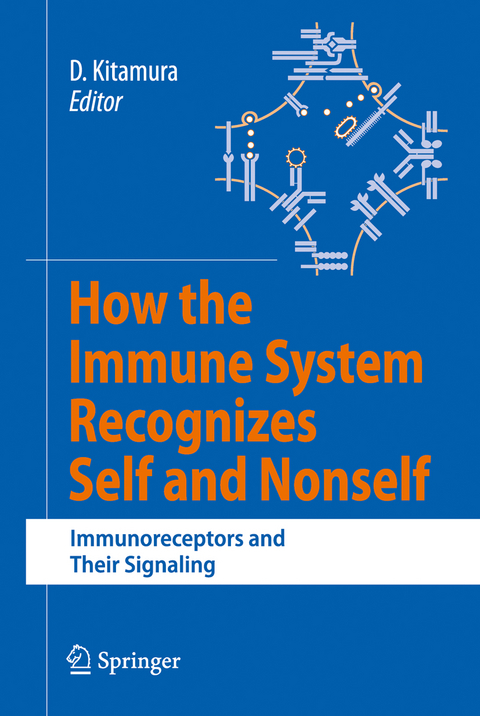
How the Immune System Recognizes Self and Nonself
Immunoreceptors and Their Signaling
Seiten
2010
|
Softcover reprint of hardcover 1st ed. 2008
Springer Verlag, Japan
978-4-431-99831-0 (ISBN)
Springer Verlag, Japan
978-4-431-99831-0 (ISBN)
How do you discriminate yourself from other people? This question must sound odd to you since you easily recognize others at a glance and, without any effort, would not mistake them for yourself. However, it is not always easy for some people to discriminate themselves from others. For example, patients with schi- phrenia often talk with “others” living inside themselves. Thus it is likely that n- mally your brain actively recognizes and remembers the information belonging to yourself and discriminates it from the information provided by others, although you are not conscious of it. This brain function must have been particularly important for most animals to protect their lives from enemies and for species to survive through evolution. Similarly, higher organisms have also acquired their immune system through evolution that discriminates nonself pathogens and self-body to protect their lives from pathogens such as bacteria or viruses. The brain system may distinguish integrated images of self and nonself created from many inputs, such as vision, sound, smell, and others. The immune system recognizes and distinguishes a variety of structural features of self and nonself components. The latter actually include almost everything but self: for example, bacteria, viruses, toxins, pollens, chemicals, transplanted organs, and even tumor cells derived from self-tissue. To this end the immune system recruits different kinds of immune cells, such as B and T lymphocytes, natural killer (NK) cells, dendritic cells, and macrophages.
Recognition of Pathogens: Toll-Like Receptors.- Strategies of Natural Killer (NK) Cell Recognition and Their Roles in Tumor Immunosurveillance.- Recent Progress on Paired Immunoglobulin-Like Receptors.- Self-nonself Recognition through B-Cell Antigen Receptor.- How Do T Cells Discriminate Self from Nonself?.- Fc Receptors.- Self and Nonself Recognition by Coreceptors on B Lymphocytes: Regulation of B Lymphocytes by CD19, CD21, CD22, and CD72.- Co-Receptors in the Positive and Negative Regulation of T-Cell Immunity.
| Zusatzinfo | 6 Illustrations, color; XVIII, 251 p. 6 illus. in color. |
|---|---|
| Verlagsort | Tokyo |
| Sprache | englisch |
| Maße | 155 x 235 mm |
| Themenwelt | Studium ► 1. Studienabschnitt (Vorklinik) ► Physiologie |
| Studium ► Querschnittsbereiche ► Infektiologie / Immunologie | |
| Naturwissenschaften ► Biologie ► Biochemie | |
| Naturwissenschaften ► Biologie ► Zellbiologie | |
| ISBN-10 | 4-431-99831-4 / 4431998314 |
| ISBN-13 | 978-4-431-99831-0 / 9784431998310 |
| Zustand | Neuware |
| Haben Sie eine Frage zum Produkt? |
Mehr entdecken
aus dem Bereich
aus dem Bereich


